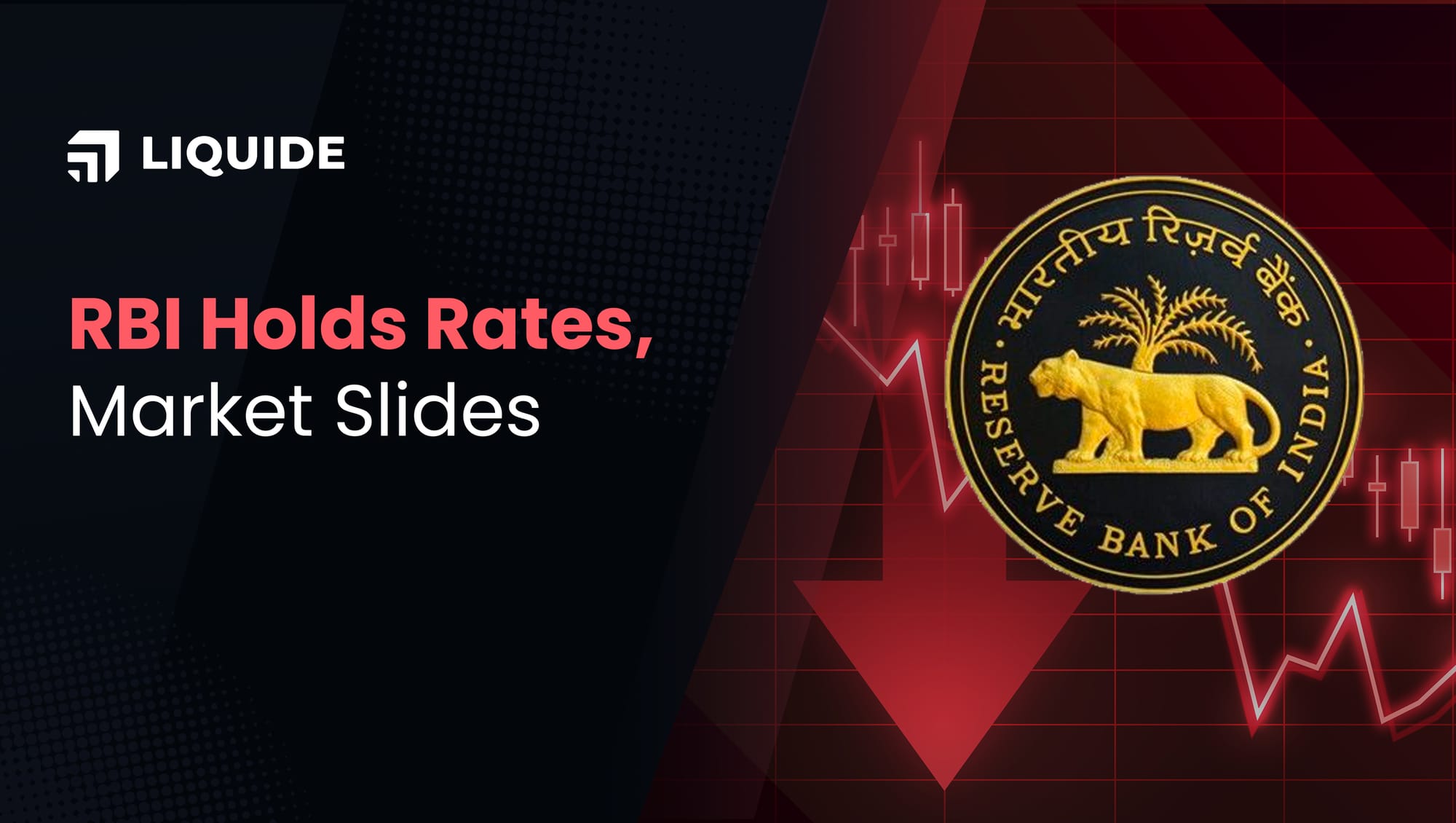Indian Stock Market Falls Despite RBI’s Expected Rate Hold; Here’s Why
Steady RBI Rates, Unsteady Markets: Exploring the Disconnect

The Reserve Bank of India's (RBI) latest monetary policy announcement on February 6-8, 2024, has sparked widespread discussion and a bit of disappointment among investors and market analysts. Despite holding the policy repo rate steady at 6.5%, as anticipated, the equity markets experienced a downturn. This reaction begs the question: what exactly caused the financial markets to respond with such negativity if nothing has changed structurally or fundamentally?
Central to the issue is the expectation among market participants for a change in the RBI's policy stance from "withdrawal of accommodation" to "neutral". This subtle yet significant expectation was left unmet, leading to market disappointment. Governor's optimistic forecast of a 7% economic growth and a reduction in retail inflation to 4.5% for FY2025 did little to sway opinions, primarily because of the continued tight liquidity conditions, which imply higher borrowing costs for the economy.
Interestingly, the decision to maintain the status quo was almost unanimous, with five out of six MPC members in favour. Only one member, J R Varma, advocated for a 25 basis point rate cut and a stance change to neutral.
The Liquidity Conundrum and Market Expectations
The financial markets, particularly the fixed-income sector, were hopeful for some liquidity easing measures from the RBI. Despite some recent moderation, the banking system has been grappling with a liquidity deficit since September 2023, peaking at over Rs 3.5 lakh crore in late January. This liquidity crunch has led to higher call money rates, an uptick in yields, and stress on banks' Liquidity Coverage Ratios (LCR), causing a curve inversion at the shorter end of the yield spectrum.
However, it's not all doom and gloom. The RBI's focus on durable liquidity, which remains positive thanks to higher surplus government cash balances, offers a silver lining. With expected increases in government spending and continued RBI support through variable rate repo (VRR) auctions, there's hope for improving liquidity conditions.
Looking Ahead: The Road to Monetary Easing
Speculation is rife about a possible shift to a "neutral" stance in the RBI's April policy, which could pave the way for rate cuts starting June 2024, especially if CPI inflation falls to the 4% mark in Q2FY25. Factors such as lower gross borrowing figures and passive inflows from India's inclusion in global bond indices could further justify a rate cut. Additionally, with CPI inflation projected to soften and real rates comfortably above the RBI's preferred level, there's room for monetary easing.
Currently, the real interest rate, calculated as the repo rate (6.5%) minus the forecasted CPI inflation for one year ahead (4.5%), stands at 2%, which is above the RBI’s preferred level of 1.5%. This indicates a potential for interest rate reductions of 50 basis points, anticipated to commence in June 2024, following the evaluation of monsoon patterns. However, the RBI's decisions may also be influenced by economic conditions in the United States.
Conclusion: A Strategic Pause
The RBI's decision to maintain a cautious approach until inflation consistently hits the 4% target underscores a strategy of fiscal prudence and monetary stability. Despite a positive growth outlook, the central bank opts for patience, signaling potential rate cuts in the future, contingent on inflation trends and global economic conditions. This cautious optimism suggests a strategic pause, with the RBI carefully balancing growth prospects against inflationary pressures, setting the stage for a thoughtful, data-driven approach to monetary policy adjustments.
Stay ahead in the world of finance with the most relevant business news and market updates. Access in-depth market analysis, expert advice, and real-time updates through the Liquide App. Download it today from the Google Play Store or Apple App Store and begin your journey towards informed and successful investing.

